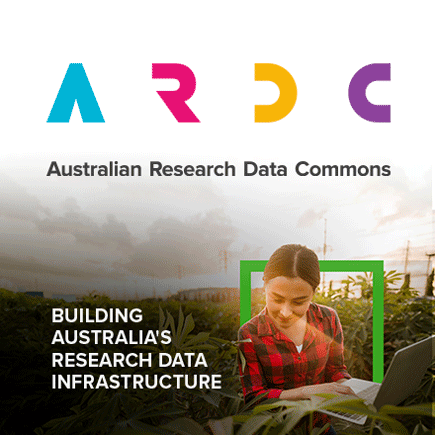Brief description
The monthly fractional cover product shows representative values for the proportion of bare ground, green and non-green ground cover for Queensland, Australia, from 2015 - present on a monthly basis. It is a spatially explicit raster product, which predicts vegetation cover at medium resolution (30 m per-pixel). This dataset consists of medoid-composited monthly fractional cover created from a combined Landsat 8 and Sentinel-2 time series.A 3 band (byte) image is produced:
band 1 - bare ground fraction (in percent),
band 2 - green vegetation fraction (in percent),
band 3 - non-green vegetation fraction (in percent).
The no data value is 255.
Notes
Supplemental InformationData are available as cloud optimised GeoTIFF (COG) files. COG files are easier and more efficient for users to access data corresponding to particular areas of interest without the need to download the data first.
Lineage
Summary of processing:Landsat 8-9/Sentinel-2 surface reflectance data > multiple single-date fractional cover datasets > monthly composite of fractional cover
Further details are provided in the Methods section.
Data Creation
Image Preprocessing:
Landsat 8 and 9 imagery rated as less than 80% cloud cover was downloaded from the USGS EarthExplorer website as level L1T imagery. Sentinel-2 data was downloaded from the ESA as Level 1C (version 02.04 system). Masks for cloud, cloud shadow, topographic shadow and water were applied as described in Flood (2017).
Fractional Cover Model:
A multilayer perceptron (MLP) model is used to estimate percentage cover in three fractions – bare ground, photosynthetic vegetation (PV) and non-photosynthetic vegetation (NPV) from surface reflectance, for every image captured within the season. The MLP model was trained with Tensorflow using Landsat TM, ETM+ and OLI surface reflectance and a collection of approximately 4000 field observations of overstorey and ground cover. The field observations covered a wide variety of vegetation, soil and climate types across Australia, collected between 1997 and 2018 following the procedure outlined in Muir et al (2011). As the model is trained on Landsat imagery, the Sentinel-2 reflectance values are slightly adjusted to more closely resemble Landsat imagery, then the fractional cover model is applied. The model was assessed to predict the vegetation cover fractions with MAE/wMAPE/RMSE of:
bare - 6.9%/34.9%/14.5%
PV - 4.6%/37.9%/10.6%
NPV - 9.8%/25.2%/16.9%.
Data compositing:
The method of compositing used selection of representative pixels through the determination of the medoid (multi-dimensional equivalent of the median) of at least three observations of fractional cover imagery. The medoid is the point which minimises the total distance between the selected point and all other points. Thus the selected point is “in the middle” of the set of points. It is robust against extreme values, inherently avoiding the selection of outliers, such as occurs when cloud or cloud shadow goes undetected. Unfortunately, due to the high level of cloud cover in some areas, often three cloud free pixels are not available, resulting in data gaps in the monthly fractional cover image.
For further details on this method see Flood (2013).
Notes
CreditWe at TERN acknowledge the Traditional Owners and Custodians throughout Australia, New Zealand and all nations. We honour their profound connections to land, water, biodiversity and culture and pay our respects to their Elders past, present and emerging.
This dataset was produced by the Joint Remote Sensing Research Program using data sourced from US Geological Survey and the European Space Agency.
This product captures variability in fractional cover at monthly time scales, forming a consistent time series from 2015 - present. It is useful for investigating more rapid changes than the three-month seasonal products. For example, the monthly dataset is used by the Queensland pastoral industry for improved monitoring of drought conditions. The green and non-green fractions may include a mix of woody and non-woody vegetation. For applications investigating long-term dynamics, the three-month seasonal product may be more appropriate.
This product is based upon the JRSRP Fractional Cover 3.0 algorithm.
Data Quality Assessment Scope
local :
dataset
1) All the data described here has been generated from the analysis of Level 1A Landsat OLI and Sentinel Level 1C (see Publications: Flood (2017). </br>
2) The fractional cover model was compared to samples drawn from approximately 4000 field reference sites.
European Space Agency. (n.d.). Sentinel 2 Performance and Data Quality Reports. SentiWiki.
uri :
https://sentiwiki.copernicus.eu/web/document-library#DocumentLibrary-PerformanceandDataQualityReportsLibrary-S2-Performance-DQR
Data Quality Assessment Result
local :
Quality Result
1) The Sentinel-2 Data Quality Report from ESA indicates that positional accuracy is on the order of 12 m. The USGS aims to provide Landsat image-to-image registration with an accuracy of 12 m. </br>
2) The fractional cover model predicts the vegetation cover fractions with MAE/wMAPE/RMSE of:</br>
bare - 6.9%/34.9%/14.5% </br>
PV - 4.6%/37.9%/10.6% </br>
NPV - 9.8%/25.2%/16.9% </br>
Created: 2022-03-28
Issued: 2022-05-03
Modified: 2024-09-24
Data time period: 2015-12-01
text: Queensland, Australia
User Contributed Tags
Login to tag this record with meaningful keywords to make it easier to discover
 Point-of-truth metadata URL
Point-of-truth metadata URL
Flood, N. (2017). Comparing Sentinel-2A and Landsat 7 and 8 Using Surface Reflectance over Australia. Remote Sensing, 9(7). https://doi.org/10.3390/rs9070659
doi :
https://doi.org/10.3390/rs9070659![]()
Flood, N. (2013). Seasonal Composite Landsat TM/ETM+ Images Using the Medoid (a Multi-Dimensional Median). Remote Sensing, 5(12), 6481–6500. https://doi.org/10.3390/rs5126481
doi :
https://doi.org/10.3390/rs5126481![]()
Flood, N., Danaher, T., Gill, T., & Gillingham, S. (2013). An Operational Scheme for Deriving Standardised Surface Reflectance from Landsat TM/ETM+ and SPOT HRG Imagery for Eastern Australia. Remote Sensing, 5(1), 83–109. https://doi.org/10.3390/rs5010083
doi :
https://doi.org/10.3390/rs5010083![]()
Zhu, Z., & Woodcock, C. E. (2012). Object-based cloud and cloud shadow detection in Landsat imagery. Remote Sensing of Environment, 118, 83–94. https://doi.org/10.1016/J.RSE.2011.10.028
doi :
https://doi.org/10.1016/J.RSE.2011.10.028![]()
European Space Agency. (n.d.). Sentinel 2 Level-1C Algorithms and Products. Sentinel Online.
- URI : geonetwork.tern.org.au/geonetwork/srv/eng/catalog.search#/metadata/8d3c8b36-b4f1-420f-a3f4-824ab70fb367

- global : 8d3c8b36-b4f1-420f-a3f4-824ab70fb367


